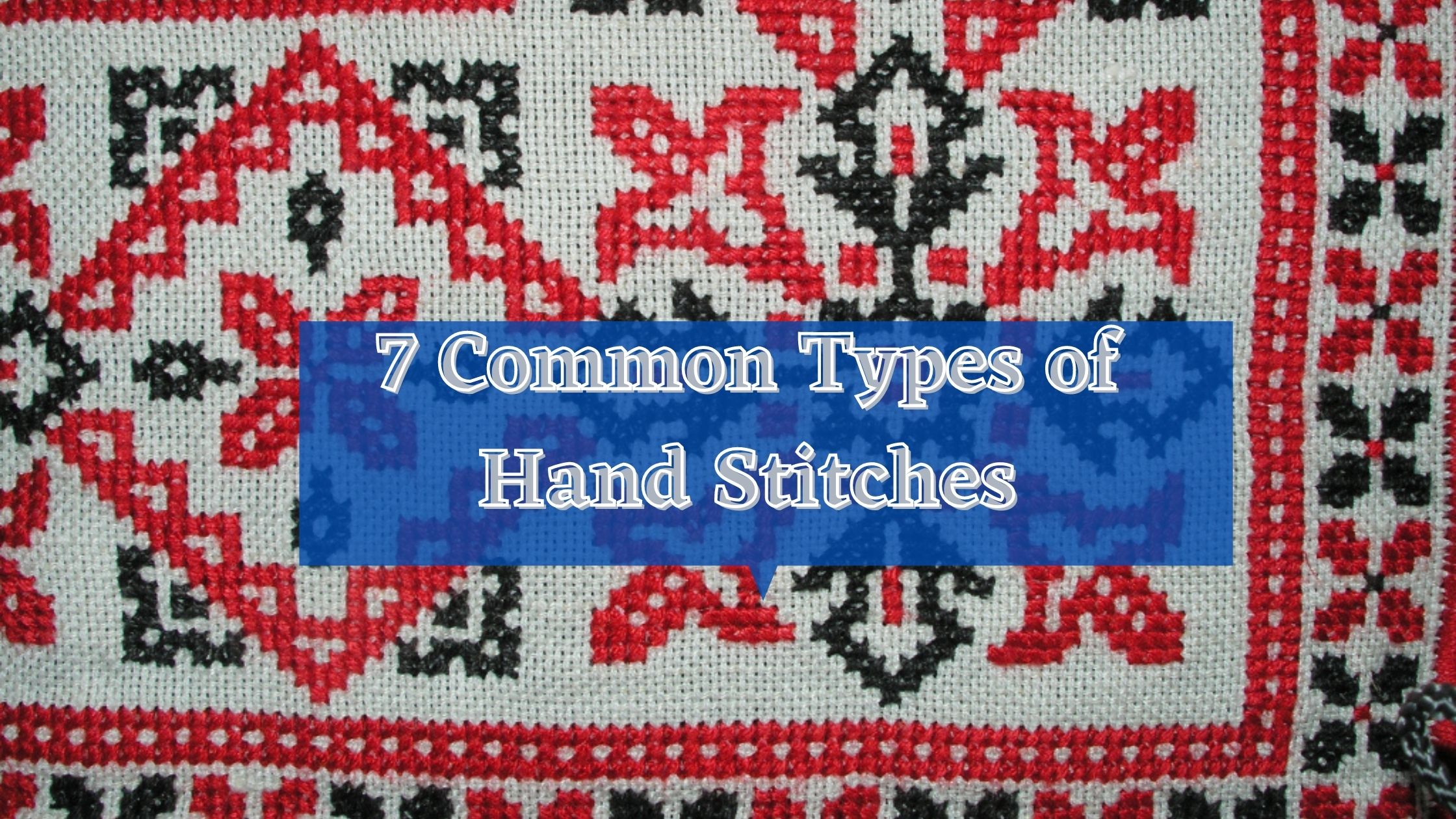7 Common Types of Hand Stitches

There are different types of hand stitches. Some common hand stitches are discussed here in this article.
Running or straight stitch is the most common of all. You may experience that at least once in your whole life time. While you tear your dress unfortunately and have not enough time to repair it by the professional, you may fix it by yourself, if you have a little knowledge about it.
Different Types of Hand Stitches are discussed below
There are several types of hand stitches. But all of them are not that much familiar with the sewers. So, the most common types of hand stitches are discussed in this article.
Straight or Running stitch
This is the most basic type of hand stitch.
Procedure:
- According to the design, insert the needle down to the fabric.
- Bring the needle up from the below of the fabric.
- Then stick it down again.
- Repeat the process until the thread is run out.
- Leave space between the strands of threads.
Used for:
- Intricate stitches
- Fine gathering
- Hand darning
- Easy tucking
Backstitch
It is a strong and reliable stitch. When the sewing machines are not introduced, clothes are made by layer upon layer of backstitches. This form is also known as backstitch, back stitch, outline stitch, stem stitch, and split stitch.
Procedure:
- Take a small stitch
- At the end of the former stitch, insert the needle and bring it out where the thread emerges.
- Carry on the step.
- Mind it, always insert the needle at the end of the former stich.
Used for:
- Holding the fabric pieces together tightly
- Handmade garments in the place of machine stitching
- Putting a zipper by hand
- Delicate garments under-stitching
Basting or tacking stitch
Basting stitch is such a stitch that can replace pins. Basting stitch is also known as tacking stitch. It is not more than a running stitch. But the only difference is that it has a longer spaces and longer strands of threads. Easy process with just a slight changes in the space and length.
Procedure:
- According to the design, insert the needle down to the fabric with longer stitches up to 1/4 inch to 1/2 inch.
- Bring the needle up from the below of the fabric.
- Then stick it down again.
- Repeat the process until the thread is run out.
- Pull the fabric back a bit when the stitch is done.
Used For:
- Temporary stitch
- Gathering fabric
- Tucking
Catch stitch
It is perfect of hemming especially when it is applied for light or soft fabrics.
Procedure:
- Begin the stitch from the wrong side of the flap just to hide the knot under the cloth.
- Grab just a millimeter distance of the fabric diagonally from the original spot where the needle is stuck through.
- Then the needle is inserted down to catch the small amount of flap fabric.
Used For:
- Hemming
- Tacking
- Holding interfacing pieces to-gather
Blanket stitch or Buttonhole stitch
Procedure:
- Secure the thread and bring the thread to the outside edge.
- Insert the needle through the fabric 1/8 inch from the edge.
- Then wrap the thread under the needle.
- Pull the needle through and form a knot.
- Covering hooks and eyes, bring the needle to the surface.
- Bring the knot to the fabric edge.
- Make sure the stitches are very close to-gather.
Used for:
- To cover hooks and eyes
- Sew on fastener
- For hand worked buttonhole
Fell stitch
Procedure:
- Emerging on the folded edge, make a stitch about 1mm away from the fold.
- Pierce the needle to the fabric nest to the fold
- Diagonally run it to emerge the stitch with the first stitch
- Close the stitch.
Used For:
- Applique seam
Whip stitch
Procedure:
- Whip stitch is simple stitch in both crocheting and sewing
- First enter the needle to the inside of the top lip to hide the knot inside
- Then the needle goes through the bottom and top lip.
- Keep the thread over the lip.
- Repeat the steps.
Used for:
- Making applique
- Making jeans
- Quilting
- Hemming
To Sum Up!
Hope you will have a little knowledge on this stitches. This will help you to create or decorate your own clothes.